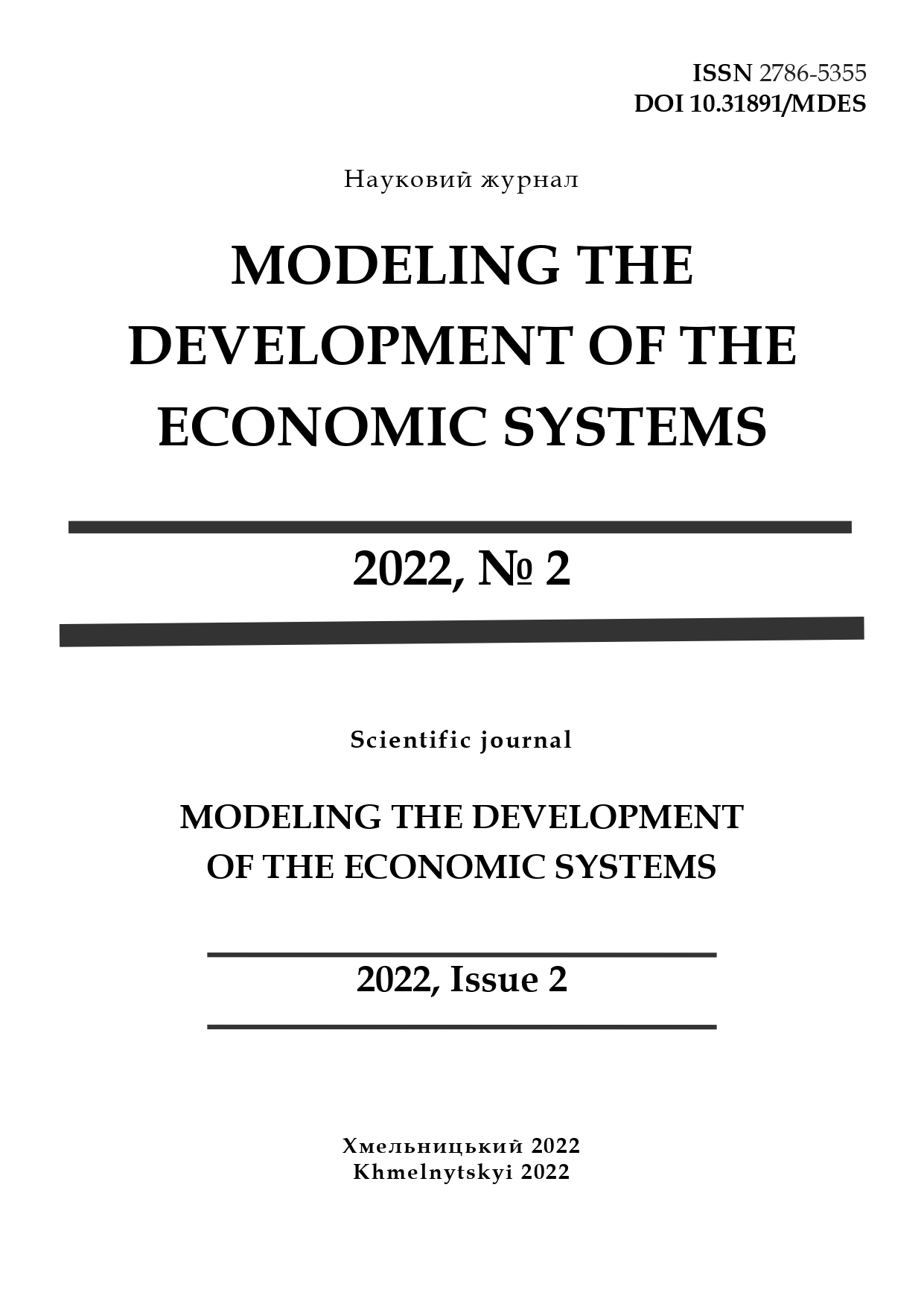PROSPECTS OF CONSUMER LENDING DEVELOPMENT IN UKRAINE IN MODERN CONDITIONS
DOI:
https://doi.org/10.31891/mdes/2022-4-15Keywords:
lending, consumer credit, credit risk, scoring, bridging loansAbstract
The relevance of scientific research is due to the fact that a significant role in the profits of banks has lending to individuals, because the stability of credit relations with individual clients, a variety of forms of lending largely determine the efficiency of the bank. One of the means of expanding the volume of lending operations to the population while reducing credit risk is the development and implementation of credit products. This can be achieved by revising and refining the existing lending schemes of domestic banks, taking into account the significant practical experience in providing loans to individual borrowers by banks in market economies.
The level of confidence in banks and the banking system in Ukraine is unacceptably low. According to statistics, 77% of citizens do not trust banks, 44% of them do not trust at all. And only 8.8% of the population has deposits in banks. An important reason for the loss of confidence is the insecurity and lack of information of borrowers about the loan. More than half of the consumer loan agreements offered to "mystery shoppers" contained unfair terms for the borrower. All this is because there has been no serious lawsuit in Ukraine that would have punished the bank for such violations. This indicates the non-partner attitude of banks to their customers and aggressive credit policy.
Graphically shows the common and distinctive features between banks and non-bank financial institutions, as well as the method of scoring to assess credit risk on personal plastic cards. Based on this technique and using the experience gained in the field of preparation and implementation of lending to individual borrowers, each commercial bank will be able to independently develop its own method of scoring to assess credit risk on plastic cards. One of the types of bank loans to the population for the purchase of housing is bridging loans, which are loans for the purchase of new housing instead of the old one. Our study identified possible ways to further develop and improve the relationship between domestic banks and individuals through the introduction of new credit products, which should include bridging loans and loans with repayable annuity, as well as modernization of forms and methods of lending, refinement of terms and repayment loans, use of foreign experience.
References
Vovchak O. D., Antoniuk O. I. (2016) Spozhyvche kredytuvannia v Ukraini: suchasnyi stan ta tendentsii rozvytku v umovakh finansovo-ekonomichnoi nestabilnosti [Consumer lending in Ukraine: current status and development trends in conditions of financial and economic instability]. European perspectives. Vol. 2. pp.148-158.
Partyn H. O. (2014) Stan spozhyvchoho kredytuvannia v Ukraini ta perspektyvy yoho rozvytku z vrakhuvanniam umov suchasnoi finansovo-ekonomichnoi ta politychnoi sytuatsii [The state of consumer lending in Ukraine and prospects for its development taking into account the current financial, economic and political situation]. Scientific Bulletin of NLTU of Ukraine. Vol. 24.6. pp. 257-262
Perih H.Ie. Spozhyvche kredytuvannia ta perspektyvy yoho rozvytku v Ukraini [Consumer lending and prospects for its development in Ukraine]. URL: http://dspace.tneu.edu.ua/bitstream/6497/1825/1/0G.Ye.%2%20BSs-51 (accessed 17 June 2022).
Pokaznyky bankivskoi systemy [Indicators of the banking system]. URL: https://bank.gov.ua/control/uk/publish/article?art_id=34661442&cat_id=34798593 (accessed 17 June 2022).
Spozhyvche kredytuvannia: pozychalnykam - prava, bankiram – oboviazky [Consumer lending: borrowers - rights, bankers - responsibilities]. URL: https://www.epravda.com.ua/columns/2017/06/13/625982 (accessed 20 June 2022).




